A paradise for pigs at Best Friends Animal Sanctuary
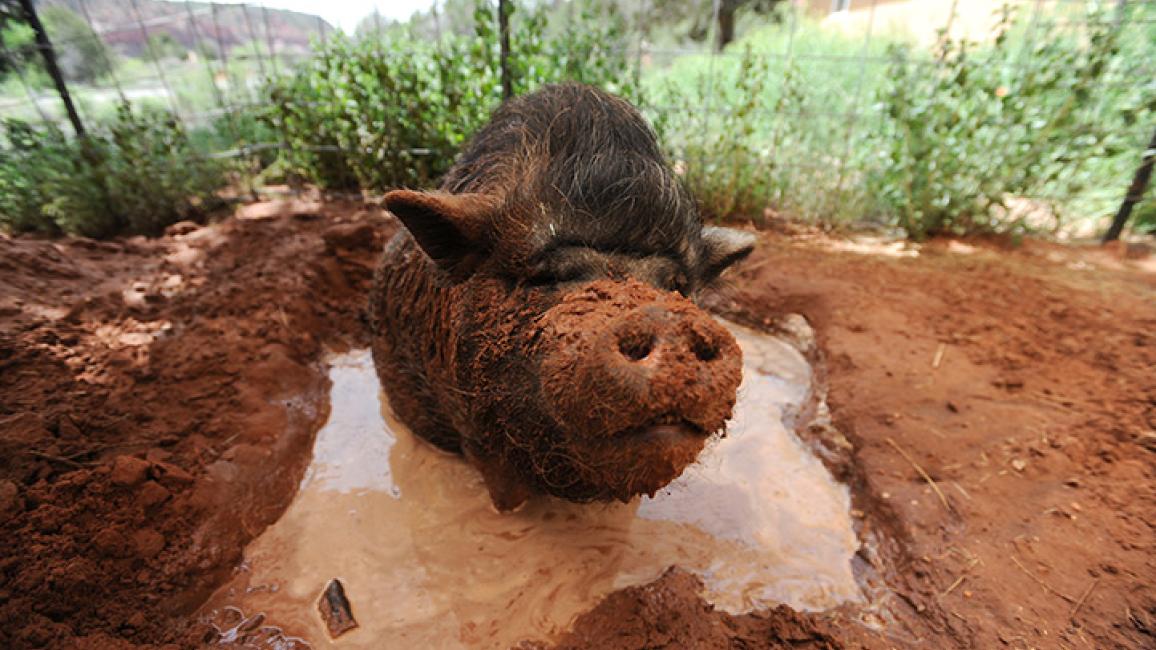
This article appeared in Best Friends magazine. You can subscribe to the magazine by becoming a Best Friends member.
Nestled into the lower part of majestic Angel Canyon, Marshall’s Piggy Paradise is heaven on earth for the Sanctuary’s pigs. Potbellied pigs are intelligent, clean and adorable, and they can make wonderful pets. But sometimes they lose their homes because local zoning laws prohibit them, or because pigs advertised by breeders as “teacup” or “mini” pigs grow much larger than expected.
Four fun facts about Marshall’s Piggy Paradise
- About 25 pigs call Marshall’s Piggy Paradise home at any one time.
- In an average week, Marshall’s Piggy Paradise will go through four cases of romaine lettuce (24 heads per case), five 30-pound boxes of frozen veggie mix, and assorted fresh fruits or veggies in season.
- Our piggies receive annual “spa days,” which include hoof trims, blood work, dental care and a general wellness check. Some of the older or special-needs pigs may receive two or more spa days per year if needed.
- All of our pigs are spayed or neutered.
Whatever the reason they come to Best Friends, the Sanctuary’s pigs all have one thing in common: Here, they are loved and assured the best care possible. They get medical attention, a high-quality diet and assistance overcoming any behavioral challenges they may have, not to mention plenty of enrichment to keep life fun. Best of all, they get to make friends with other pigs, and as social animals, they love it.
Learn more about potbellied pigs
Group living for pigs
In Marshall’s Piggy Paradise, pigs live in groups. Community is crucial to their happiness and well-being, and it can help them form better relationships with people, too. “In my experience, when pigs don’t have the opportunity to socialize and interact with other pigs, they can start to have problems with people,” says Jen Reid, manager of Horse Haven and Marshall’s Piggy Paradise.
Not all pigs make perfect roommates; it takes time and effort to put together well-matched groups that can coexist peacefully and happily. To that end, there’s a “retirement community,” for older pigs and those with special physical needs, and a “piggy park,” a piglet-proof area that often houses a younger, smaller group. In the “green collar” area (a reference to the same collar-coding system used in Dogtown), friendly, easygoing pigs interact with volunteers and other visitors. Pigs who need extra one-on-one attention and socialization — but also a little more space and less foot traffic — live in the “social butterfly” area. Finally, there’s Holly’s pasture, also affectionately called the rumpus room, where higher-energy pigs (including one named Holly) reside.

What do pet pigs eat?
No matter which group they fit into, all of the pigs have access to cozy houses that keep them dry and comfortable in every season. Some houses have heat and air-conditioning, while others are packed full of hay for the pigs to nest in.
To eat like a pig in Marshall’s Piggy Paradise is to eat a low-sugar, high-fiber diet. While high-quality pellets are a foundation of that diet, they are supplemented with a variety of fresh veggies, such as romaine lettuce, peas, carrots, lima beans and green beans, and seasonal snacks, such as watermelon, zucchini and pumpkin. Fig cookies are the treats of choice, along with dried fruit and almonds. Coconut oil, another delicacy, helps keep the pigs’ skin healthy.
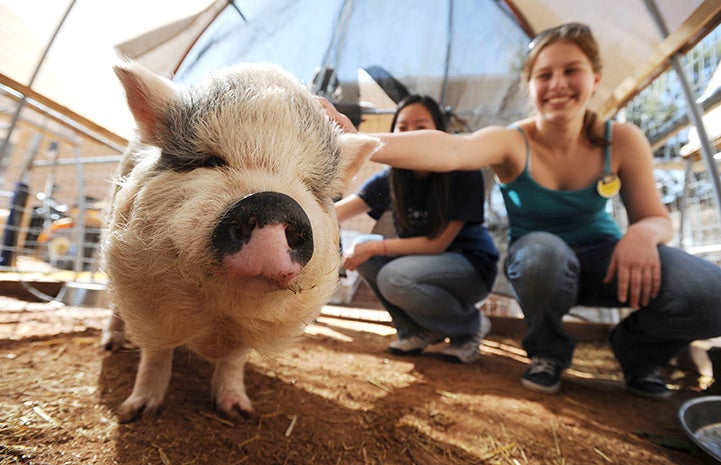
A small on-site clinic provides routine dental care, hoof care and wellness checks. Pigs who need critical care or surgery go to the Best Friends Animal Clinic, a short ride up the canyon.
How to take care of pet pigs
When you’re a pig in Marshall’s Piggy Paradise, there are always plenty of people to see and things to do. There’s lots of room to root around in the dirt, and when the weather is warm, the pigs can take a luxurious mud bath or go on a stroll with caregivers and volunteers. Many Sanctuary volunteers love socializing with the pigs to help them get ready for forever homes.
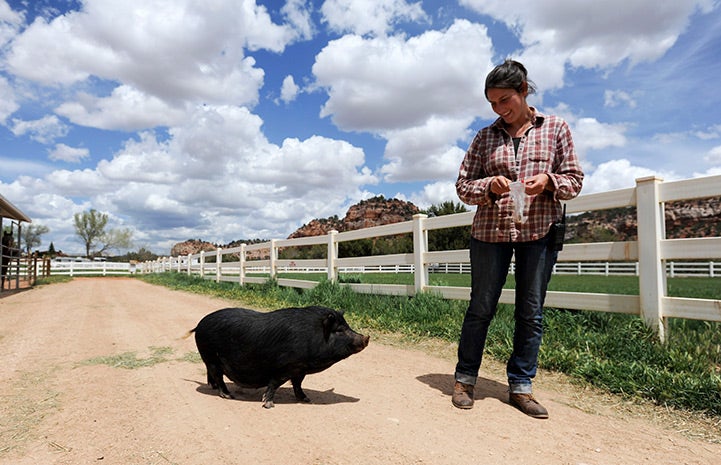
The entertainment options are nearly endless. Food puzzles are popular here, as are a variety of fun and games. Best Friends trainers and caregivers use Parelli Natural Horsemanship (a training method that’s commonly used with horses, but certainly isn’t exclusive to them) and lots of positive reinforcement (think fig treats) to teach pigs fun sports like agility, as well as useful life skills, such as how to go into a kennel comfortably or walk up a ramp into a vehicle.
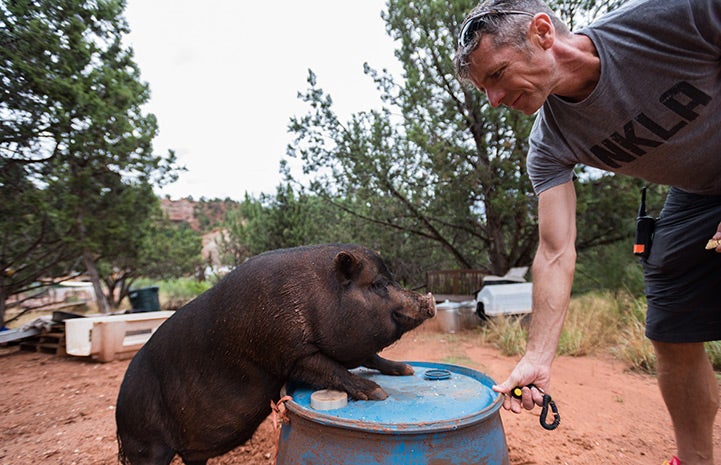
Sometimes, caregivers and volunteers just sit quietly with the pigs, brushing them and rubbing their bellies. When it comes down to it, the most important thing at Marshall’s Piggy Paradise is giving the pigs all the love and attention they deserve for as long as it takes for them to find loving homes of their own.
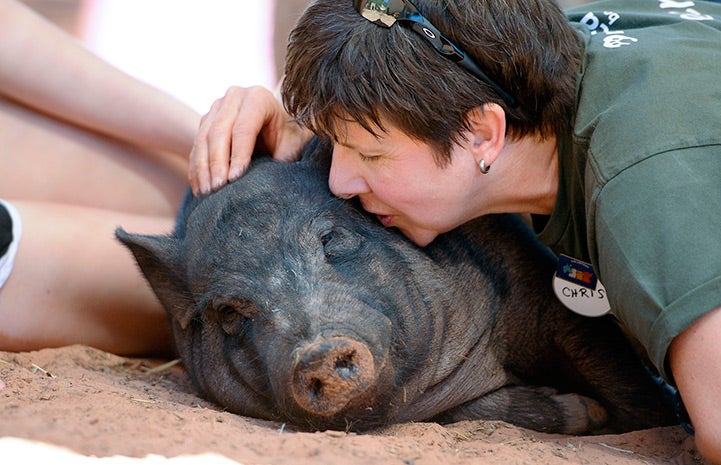
Photos by Molly Wald and Kurt Budde